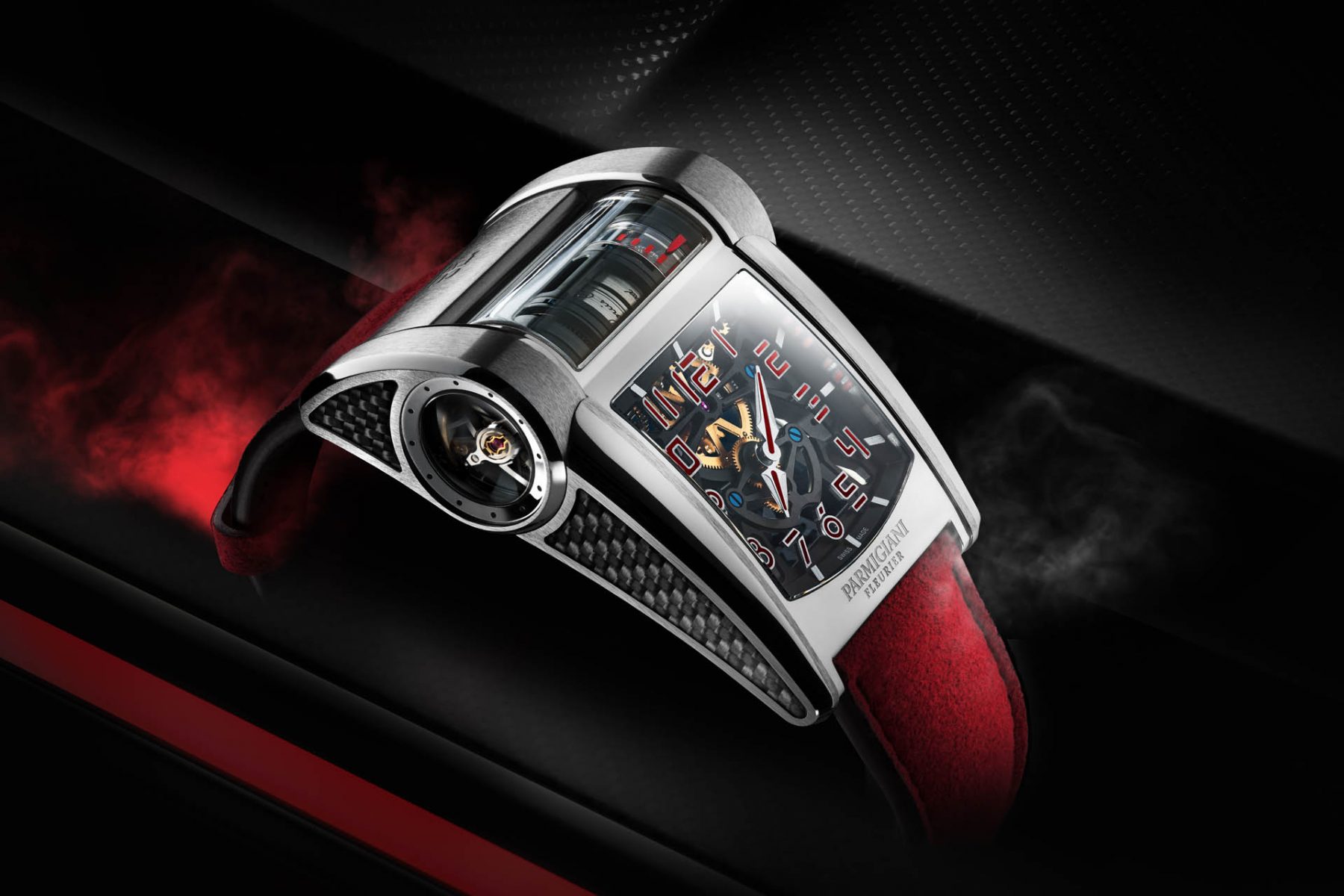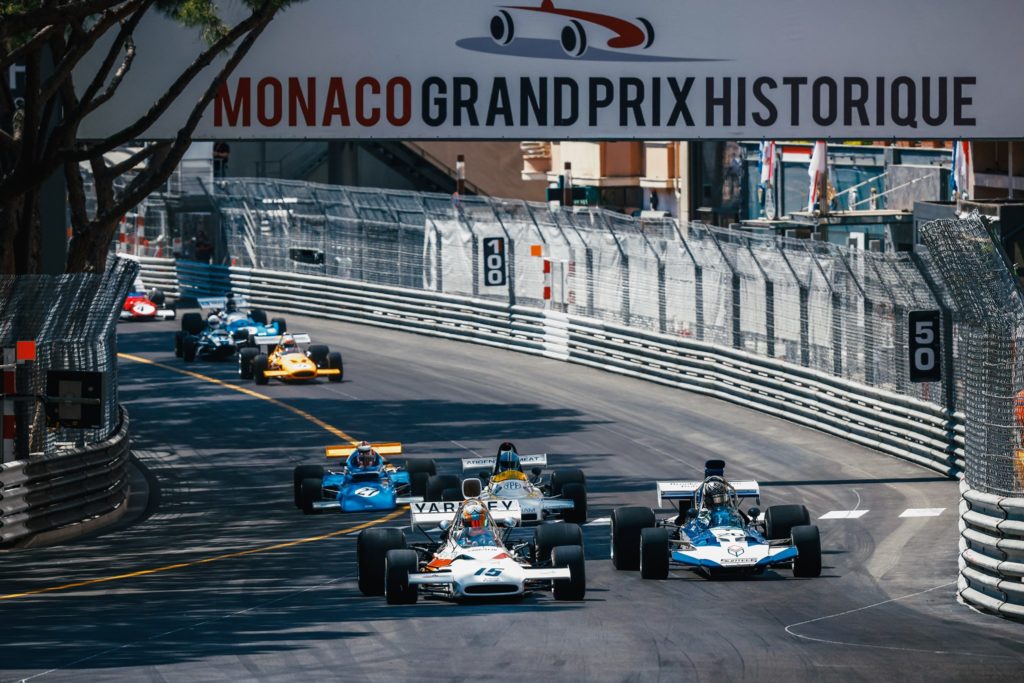
Organising events in covid times is no simple task. The organiser has to take many things into account. First of all, there are the sanitary regulations and then there are the travel restrictions and quarantine obligations. It was no different for the automobile club de Monaco or ACM, organiser of the Monaco Grand Prix, the Rally of Monte-Carlo ( WRC and historique ), the Grand Prix Historique and the Monaco Formula E Prix.
Last year, during the first major lockdown of 2020, they had to cancel all their other organisations except the Monte Carlo rally. However, this was not an option for 2021. In a span of five weeks, they want all three of their circuit organisations to continue. Very brave since other events such as the Goodwood Members Meeting, Dix Milles Tours in Le Castellet or Spa Classic were already cancelled or postponed until later. The ACM starts first with the Historique Grand Prix, then the E Prix and ends with the Monaco F1 Grand Prix. We were of course happy that there was racing again. We had to follow it from our seats at home but that was no problem at all. The livestream was perfect. Everything was shown optimally with the necessary repeats, highlights and rankings.
Public access to this first meeting was limited. Only residents of the state itself, guests of the hotels and staff of the teams were allowed to register. The list of participants was also considerably smaller this year. Around one hundred cars and drivers had registered with the ACM. The focus was on the Ferrari brand and we must say that there were some “gems” on offer. In the Formula 1 series we saw several 312 models. In the range from 1973 to 1976 even two 312B3 ( ex Lauda and Regazzoni ) with Jean Alesi and René Arnoux as pilot. In the category 1966 until 1972 we even found four 312’s! To see a Ferrari F1 driving around in competition is very rare. In the normal Masters competitions they have long disappeared, due to their significantly increased value. You only see them during demo runs at the FOS in Goodwood or the Ferrari club organisations. To really see them race, you have to go to the Monaco Historique Grand Prix. The proud owners of these cars would love to see such a prestigious victory trophy in their showcase. The circuit in the streets of Monte-Carlo, with its long history, still fires the imagination of many motorsport fans. Just seeing Formula 1 cars drifting through the bends of Loews, Tabac, Rascasse, Saint-Dévotte, Casino, Mirabeau and the passage through the tunnel are unique to the Formula 1 circus. The Monaco Historique Grand Prix is to Formula cars what Le Mans Classic is to proto cars and GTs: the nec plus ultra!
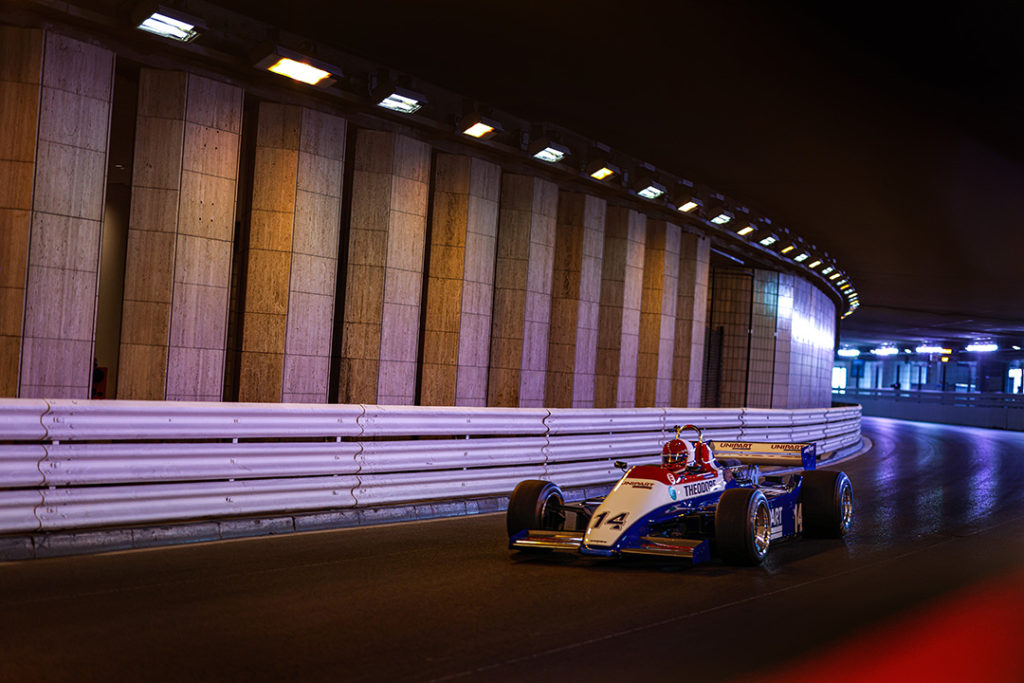
All the races are named after a pilot from the period of the participating cars. The series of Juan Manuel Fangio will kick off on Sunday morning for one day of historic fun on the streets of Monaco. The sun is out and the many yachts are shining in the harbour. Allowed are Formula 1 and 2 cars from before 1961. Unfortunately, there are only 8 participants. The Maserati 250F of Guillermo Fierra-Eleta wins. After a bad start of pole man Max Hilliard Smith, he takes the lead and brings his 250F to the finish unharmed. Hilliard Smith, after an overtaking race, finished in second place with his Lotus 16. Third was the beautiful Ferrari 246 Dino of Alex Birkenstock.
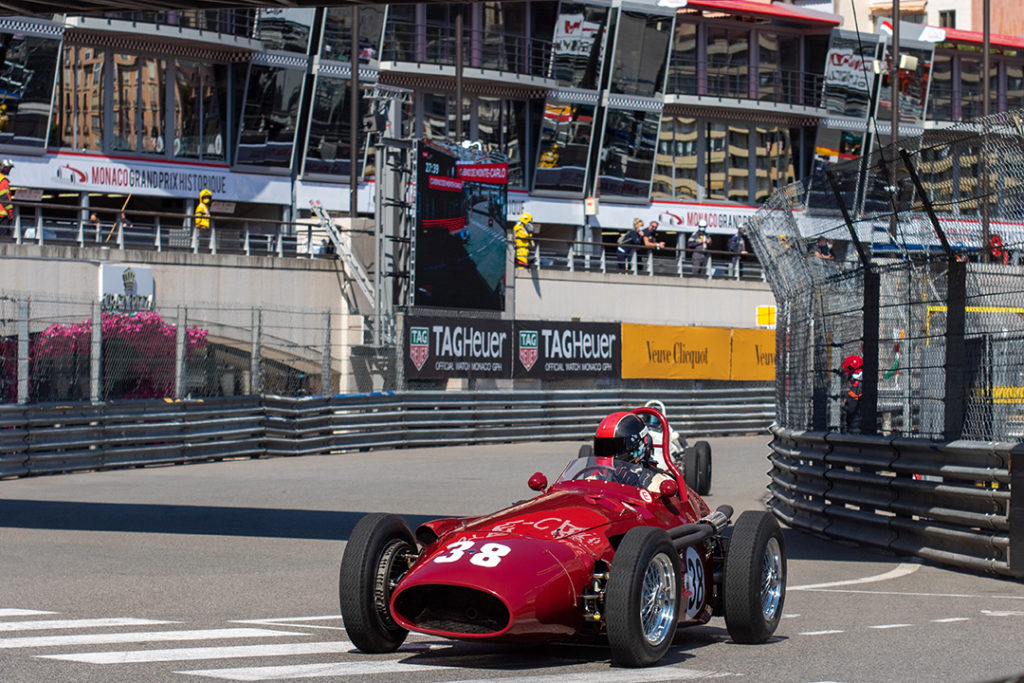
Graham Hill is the second champion to give his name to the series with Formula 1 cars from 1961 to 1965. Again, it is a very small field with only 7 cars. Most of these are from Lotus and it is no surprise that the entire podium is taken by them. Mark Shaw wins with, his ex Jim Clark Lotus T 21, the rather dull race before Nick Taylor and Philippe Bushofer.
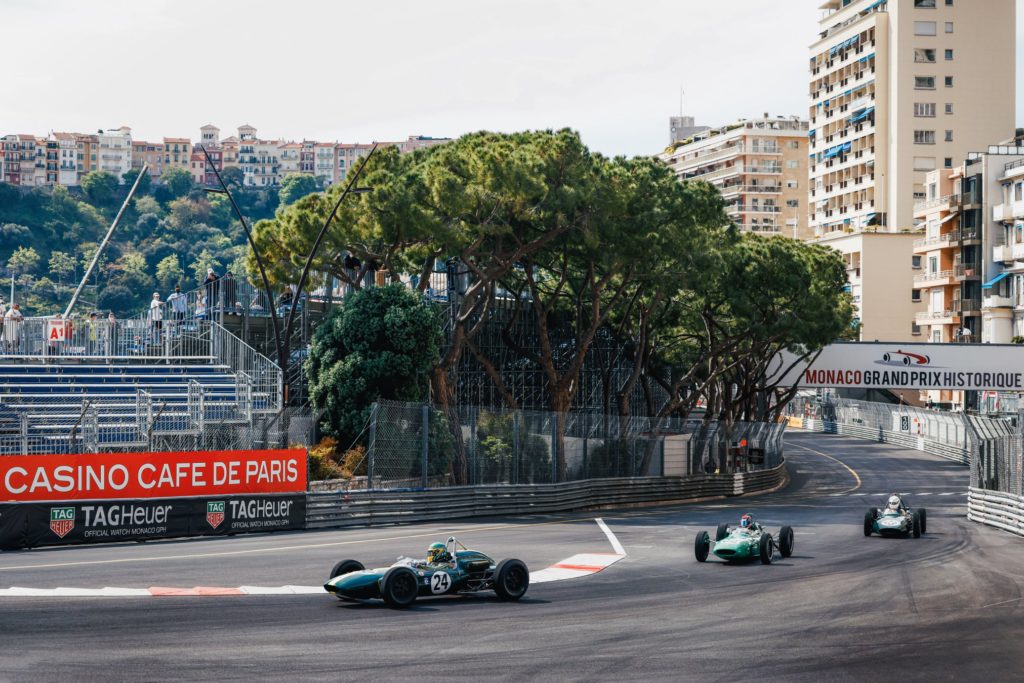
The first Monaco Grand Prix was already held in 1929. The automobile club of Monaco was already a fact and it was Anthony Noghès who was at the basis of its foundation. He was the first president of the club and organiser of the race. Of course, this was commemorated with a competition for pre-war cars. We saw the Bugatti 35 and 51, Maserati 4 and 6 CM, a Talbot Lago, a Frasher Nash and even a Mercedes SSK. Fortunately, the latter was a “short” version to run around the narrow track. Normally, this race is for the English Era’s but no English Era team had made the crossing to the South of France. The Frasher Nash of Patrick Blakeney-Edwards was however present and seems to be on its way to victory. Halfway through the race there is a problem with his gear shifting in the Loews hairpin and the pilot has to abandon the race. Winner is Christian Traber with his Talbot Lago T150 ahead of Niklas Haluso in a Bugatti 35B. The podium ceremony takes place in the Prince’s Lodge, known from the Formula 1 Grand Prix. Each winner receives an exclusive Tag Heuer Monaco watch. Champagne is not spilled here. The pilots are offered a glass of Veuve Clicquot after the podium ceremony.
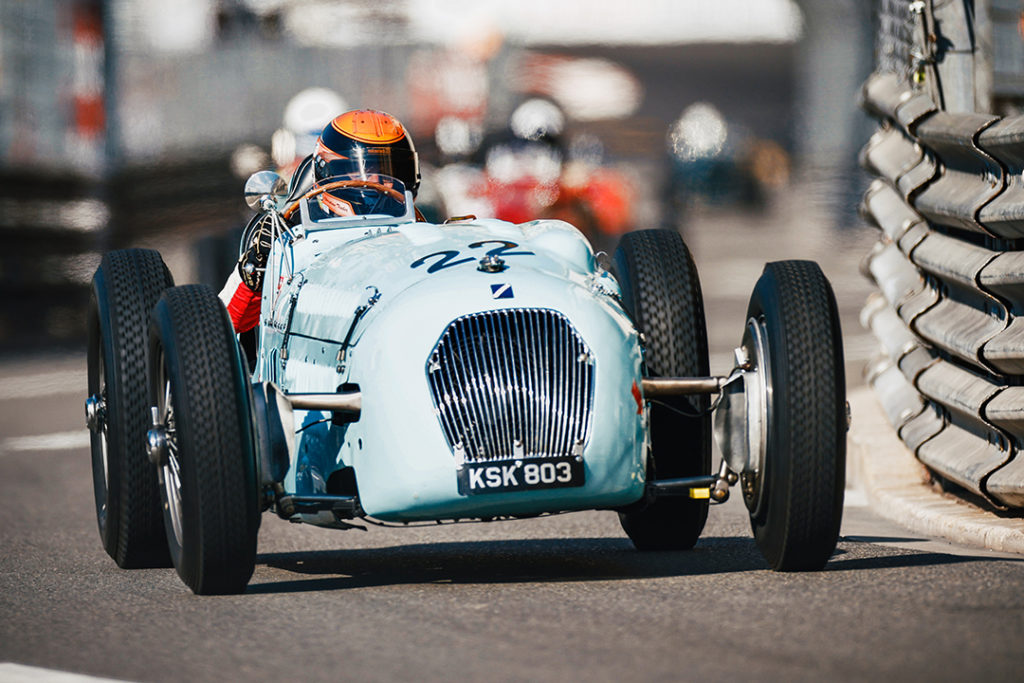
The morning ended with the Jackie Stewart series for Formula 1 cars between 1966 and 1972. We now see the first cars with sponsorship on the track. Some still minimal but with the Mclaren M19, from the Rofgo Collection the Yardley colours were already clearly present. Unfortunately, only 10 cars were ready on the starting grid. Of the four Ferrari’s announced, only one was present: a 312B2 from 1971. Alex Caffi had destroyed his 1969 312 during practice, when braking for Saint-Dévote, by crashing into the back of a Cooper. The 312 could not be repaired. Also the very special 312B3 “spazzaneve” or “snowplough” was only on the track during practice runs. Another remarkable participant is the March 721 of David Shaw. It was commissioned by its owner at the time, caravan manufacturer Eifelland, with its own bodywork by the eccentric Italian designer Luigi Colani. We also found, besides two Mclaren’s, a Surtees, a Brabham, and a Cooper, two Matra’s 120 V12 models ( one B and one C ) at the start. Also two gems! And what a sound!
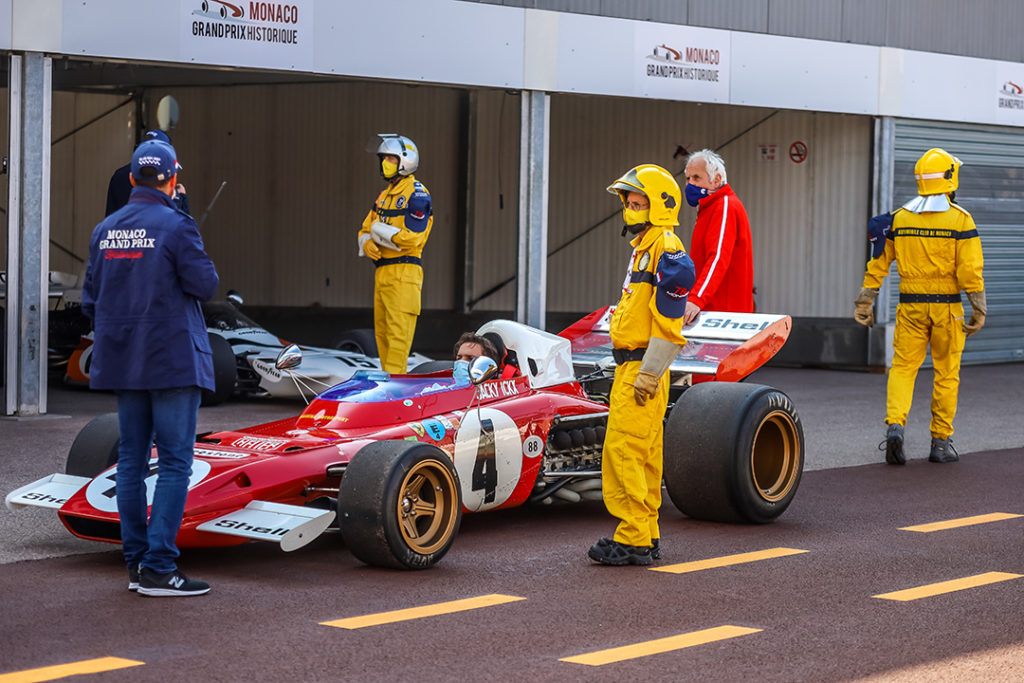
Poleman Stuart Hall was fastest at the start with his Mclaren M19 and starts the climb up Beau Rivage as leader. Michael Lyons was able to bring his Surtees TS9 up to par and pass Hall even before the Casino. The Surtees is the faster car in the first half of the race. The Ferrari 312B2 of Jürgen Boden is lost in the meantime due to mechanical problems. Half way the Mclaren comes back on the rear wing of the Surtees. Hall is clearly the fastest man but Lyons defends his position and closes the door at every turn. For third place there is also a great duel between Shaw’s Eifelland March and Constable’s Brabham BT37. In an ultimate manoeuvre the March driver tries to outbrake the Brabham for the chicanes, he hits the Brabham and pushes it off the track. Constable was able to continue and still finished third. Lyons was able to hold off Hall and won the race. The winning Surtees TS9 was once owned by the Rob Walker team. Walker, an heir of the whiskey brand Johnny Walker, was once the owner of one of the best-run private teams of the period. He and Sterling Moss, in a private Lotus 18 used by his team, achieved a legendary victory in the 1961 Monaco Grand Prix. A heroic race in which Moss managed to win the 100 laps in 2 hours and 45 minutes with a three-second lead over the Ferrari 156 “sharknose” of Richie Ginther. Those were the times! This was also the race in which the team had removed the side panels to give the driver more cooling. The spectators could fully enjoy Sterling working on his day job.
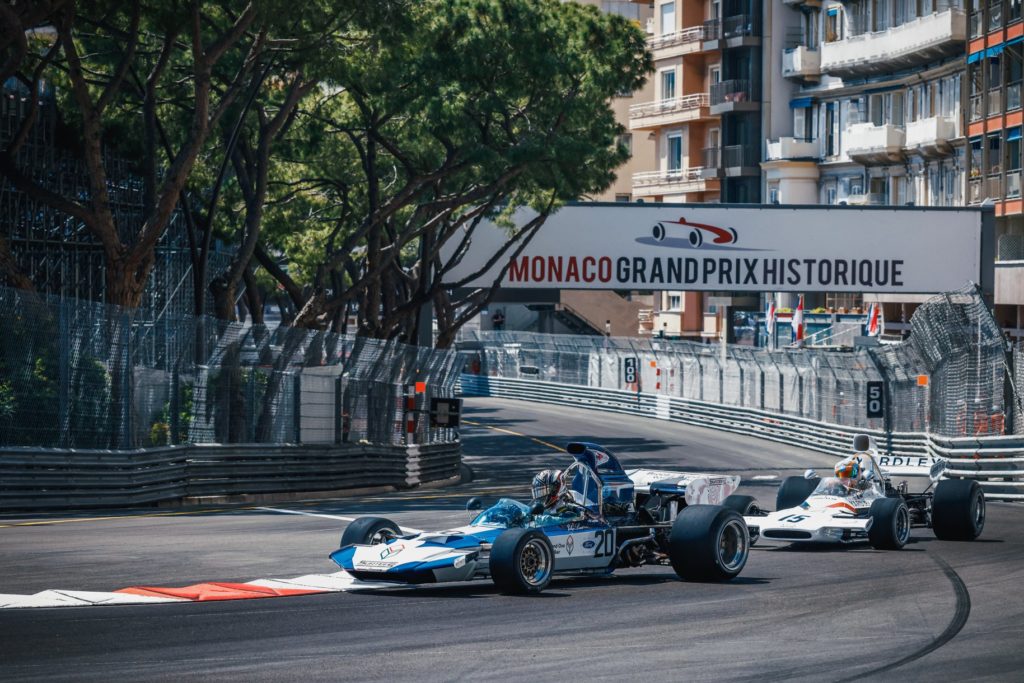
After the lunch break, the programme continued with a Sportscar race. Were there ever sports cars in Monaco? Indeed and it is not a programming error because in 1952 there was a one time Sportscar Grand Prix in the principality. The winner was the Italian Vittorio Marzotti in a Ferrari 225 S. Unfortunately there were no Ferraris among the 17 participants in this race. The Maserati colleagues are there though and we find two 300S models on the first starting row. Dutchman David Hart outsmarts pole man Guillermo Ferro-Eleta at the start and immediately takes a small lead on the rest of the field. This lead doesn’t last long though, because two laps later, his brakes fail and he crashes into the crash barriers in Rascasse. There is not much damage to his car but he has to stop the race. Ferro-Eleta is the new leader in another Maserati. He is briefly followed by the Jaguar D Type of Halusa. The latter comes very close several times but then has to let the Maserati go. Our fellow countryman Nicolas becomes with his Jaguar C type, after a beautiful overtaking race, still third. Ferro-Eleta wins his second race of the day and his second TAG.
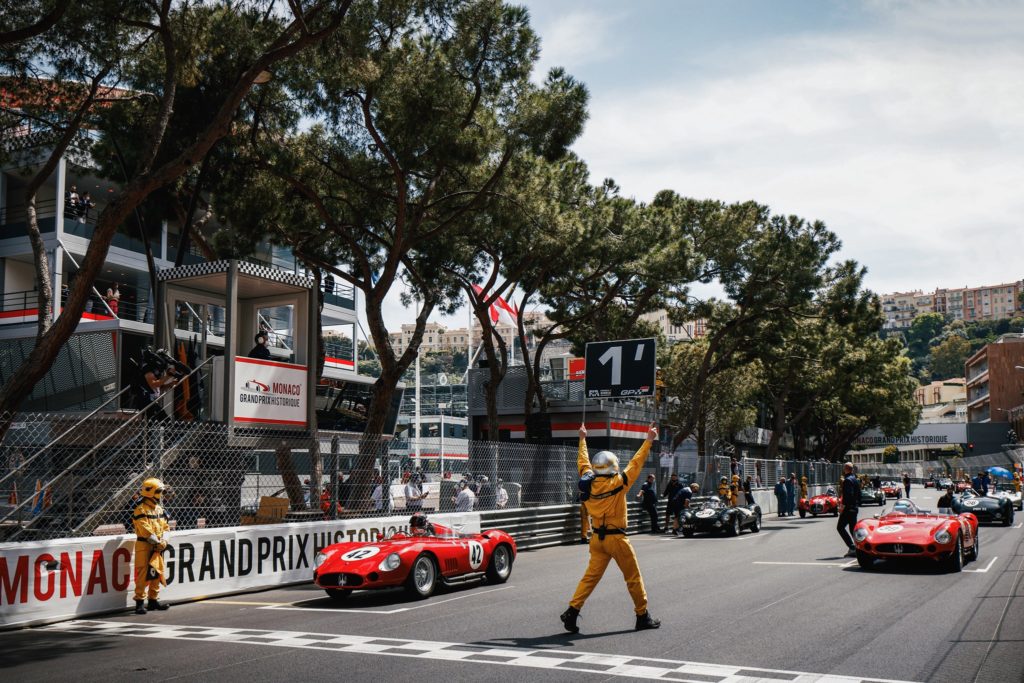
With the Niki Lauda series for Formula 1 cars between 1973 and 1976, we have arrived at the highlight of the weekend. The announcement that Jean Alesi and René Arnoux would participate in a 1974 Ferrari 312 B3 made many fans salivate. The German company Methusalem Racing had brought two beautiful Ferrari 312b3s. These were not provided with their original numbers 11 and 12, as in 1974, but with 27 ( Jean Alesi’s number at Ferrari ) and 28 ( Rene Arnoux’s number at Ferrari ). Alesi, now 56 years old, has clearly not lost much of his ability as he tore around the Monaco circuit as if debuting in F1. He can put his Ferrari on the first row of the grid behind the John Player Special Lotus of three-time Le Mans winner Marco Werner. Arnoux will unfortunately not take part in the race. He crashes his 312B3 into the wall during qualifying, while taking the turns at the pool. The damage is too big and a forfeit is inevitable. Other participating cars are a March 761, Mclaren M26, Hesketh 308B, Tyrrell 007, an Amon, a Trojan, a Surtees and three Shadow cars. Two models of the DN1 and a beautiful DN5.
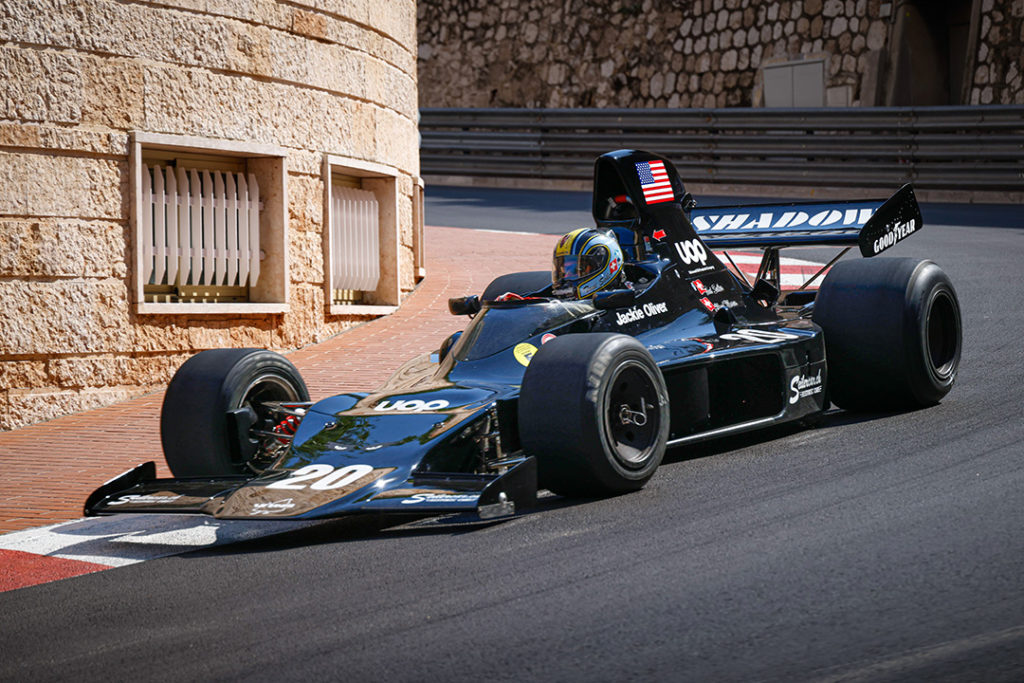
Jean Alesi makes a perfect start and takes the lead ahead of Werner’s Lotus. As in the previous F1 race, the Lotus is clearly the faster car but Alesi leaves Werner no room to overtake. The 12 cylinder Ferrari also clearly has a bit more power because in accelerating out of the bends he is able to make up a small gap each time. In the braking, Werner always gets back in front but he can’t get past Alesi. Both drivers are engaged in a very beautiful duel. Can someone call Liberty Media to show them how it should be in today’s F1? Because sometimes there is no excitement at all!
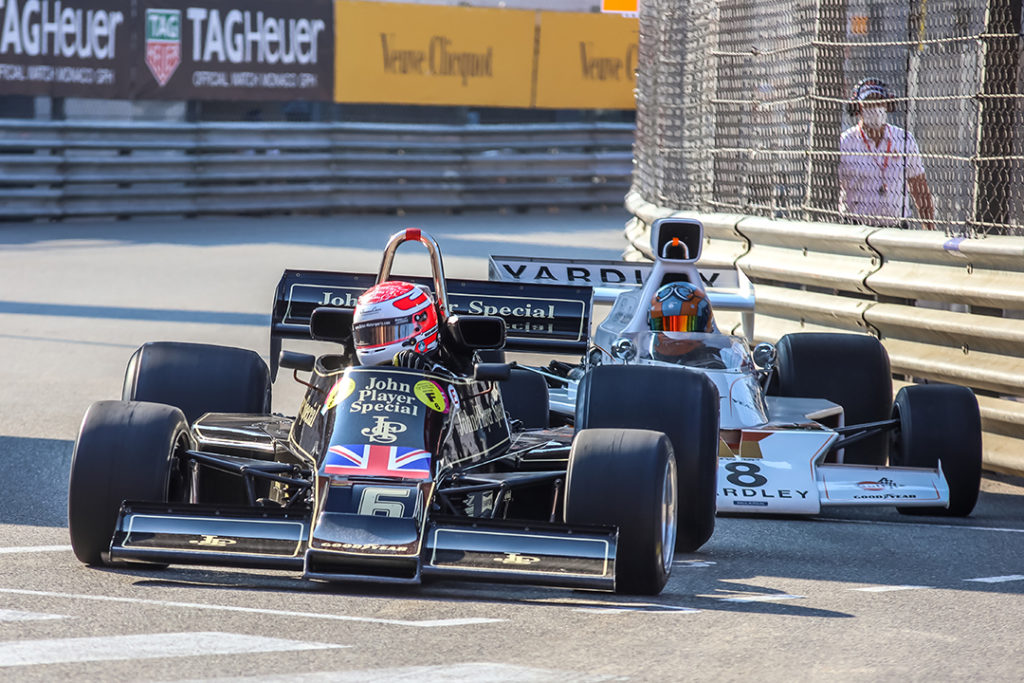
On lap ten, Werner makes a slight contact with the crash barrier, without much damage. One lap later, both men come out of the tunnel side by side. Alesi is on the inside in front of the chicanes and maintains the lead. At the start of lap 16, Werner is directly behind Jean Alesi at the exit of Anthony Noghès. They both accelerate fully for the start/finish straight. The Lotus is slightly faster than the Ferrari and its front wing comes under the rear of Alesi’s 312B3. The rear wheels briefly lift and the Ferrari smashes into the concrete wall of the old pitlane. Over and out for Jean Alesi. He remains standing next to his Ferrari and shows Werner what he thinks of him at the next pass. A pity that such a beautiful duel should end this way and with so much damage. What happened? Did Alesi miss an acceleration or was Werner a bit too fierce? We will never know because there was no telemetry in the 1970s. Alesi claims he made no mistake, Werner thinks he did and wins the race. He parked his Lotus, as is customary in Monaco, in front of the royal lodge. There he was given a 25 second time penalty for the collision with Alesi. He clearly does not agree and refuses to take his place on the third podium. The accompanying cup also remains untouched. Michael Lyons wins due to Werner’s time penalty, with his Marlboro Mclaren M26, ahead of the ex Merzario March 761 of Julien Andauer. Lyons is thus a second double winner and also receives a second Tag Heuer watch.
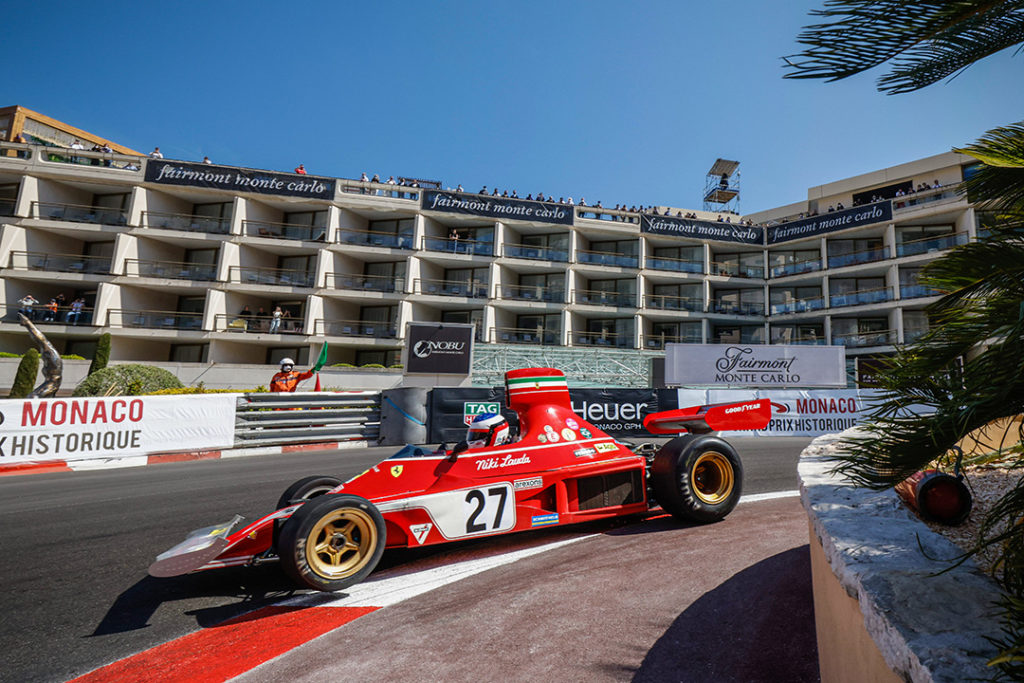
After all this tumult, there is one more race: the Gilles Villeneuve series for Formula 1 cars from 1977 to 1980. This brings us to the famous “wingcar” F1s. An invention with which Colin Chapman turned the Formula 1 world upside down in 1978. By attaching side skirts to the flanks, extra downward pressure was generated, allowing the cars to achieve much higher cornering speeds. The Lotus 79 was his masterpiece. Mario Andretti and Ronnie Peterson drove the entire competition to smithereens in 1978. The Lotus 79 stood head and shoulders above its competitors. Between all these “wingcar” cars, it is quite strange to see Michael Lyons ( yes again ) put his Hesketh 308E on pole position. This Hesketh was in 1978 not yet equipped with the side skirts and was then actually more of a filler for the starting field. It only stood out because of its decoration with a beautiful image of a lady with Rizzla sponsorship. The series has 19 participants and that is the largest starting field of the weekend.
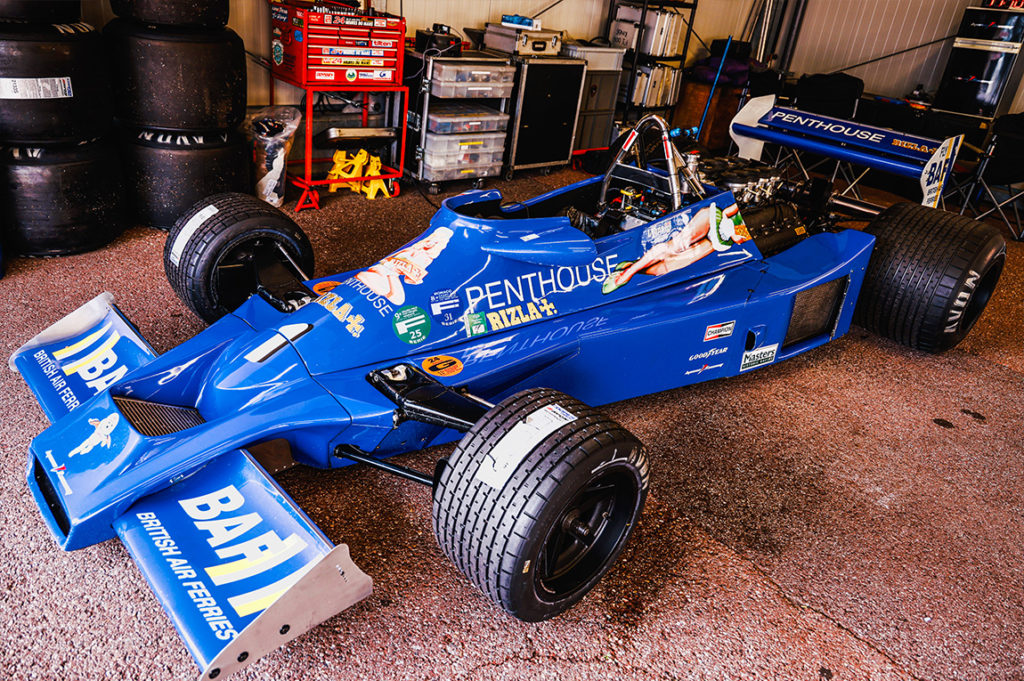
At the start, Lyons is fastest and is followed by the Warsteiner Arrows of Jordan Gregor. Our compatriot Christoph d’Ansembourg loses control of his M26 at the exit of the tunnel and hits the crash barrier. He has to park his M26 at the harbour. One lap later it is Mark Hazell who does the same with his Williams FW07B. He parks his Williams next to the Mclaren. At the front of the race it is still Lyons and Gregor who are fighting for the first place. The scenario of the previous races repeats itself. The second car is a bit faster but cannot get past them. Gregor even hits the crash barrier at the pool but is able to continue. Meanwhile the Ligier JS 11/15, driven by Matteo Ferrera-Aza who had started from the last row of the grid, is on a remonte.
On lap 9, Gregor’s Arrows had to pull over. The suspension has given way after the contact with the crash barrier. Lyons now leads comfortably in front of the two Tyrrells 010 of Cantellari and Stevenaert who fight out a tough duel for P2. In the second last lap they hit each other in Rascasse and the Candy Tyrrell remains behind in the crash barrier. Lyons wins his third race of the day and can also collect his third TAG Heuer watch. Second place goes to the Tyrrell of Mike Cantillon ahead of the Gitanes Ligier of Ferrer-Aza, which had started in last place. Who said you can’t overtake in Monaco? Lyons is doing much better with the Hesketh 308 E than the original pilot, Rupert Keegan. He finished twelfth and last in the 1977 Monaco Grand Prix, three laps behind winner Jody Schekter in a Wolf WR1. Times change and the Hesketh has apparently become much better!
This last race marked the end of the twelfth Monaco Historical Grand Prix. The starting field was on the small side this year but there were some beautiful cars. We had seen several of these cars drive in the Masters races before, but as their value increases, they disappear from the racing scene at a certain point. For the Monaco Historique, they are brought out of their stable again, which gives us great pleasure. Some drivers, like Jean Alesi, give it their all and that makes the picture even more beautiful. He was undoubtedly the “man of the weekend” with his phenomenal performance.
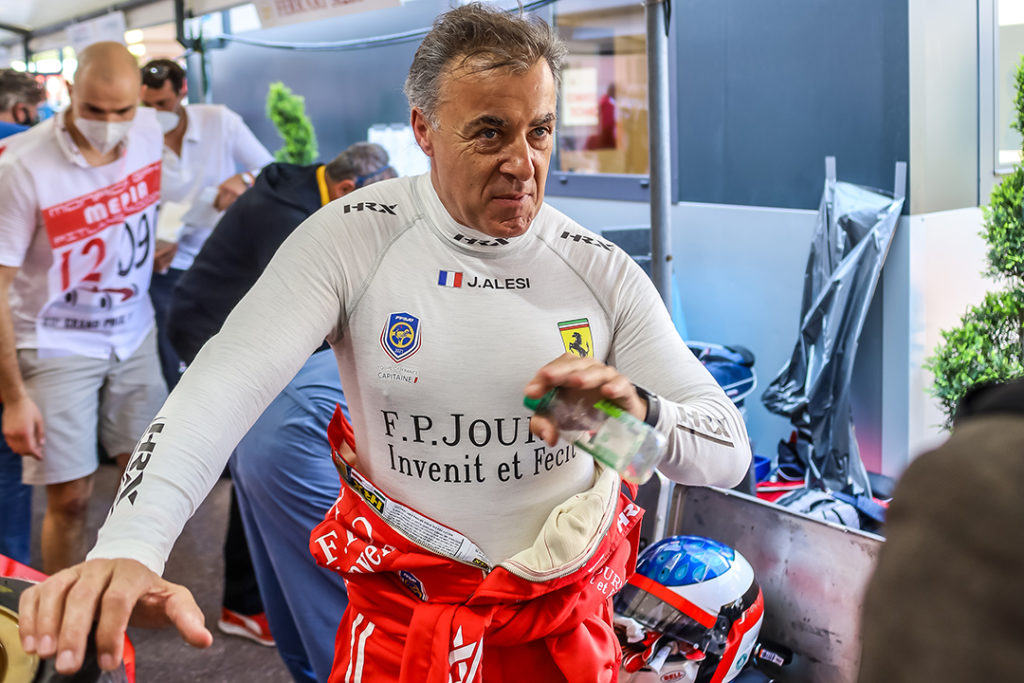
Another positive aspect is that we will not have to wait two years for the next edition. After this postponed 2020 version, there will be another one in 2022. This is exceptional because normally this is, like Le Mans Classic, a two-yearly organisation. For us, the ACM can certainly make it an annual tradition!
Report: Joris de Cock
Photos: Organisation Monaco Historic Grand Prix (ACM)
